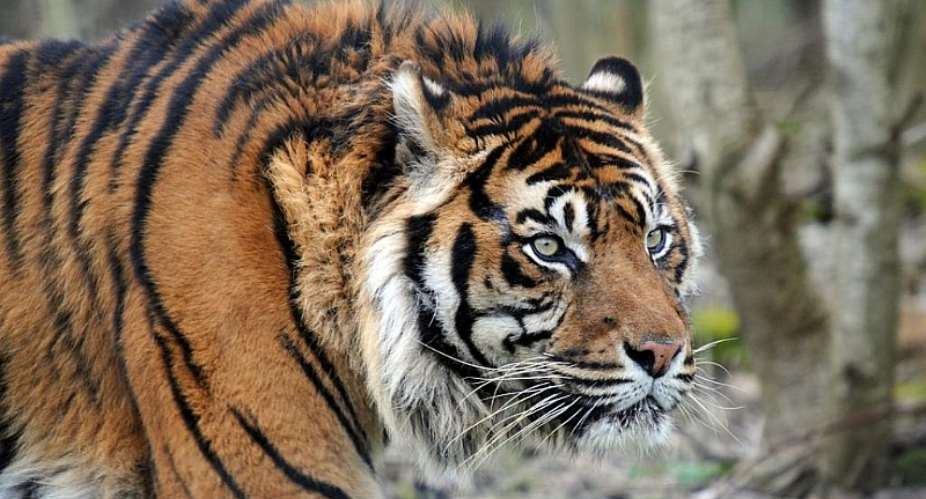Wild tiger numbers across India have jumped to nearly 3,000 – up from 2,226 four years ago, according to a new census. Prime Minister Narendra Modi has hailed the news as a "historic achievement".
"We reaffirm our commitment towards protecting the tiger," Modi said in Delhi as he released the All India Tiger Estimation Report 2018.
"Some 15 years ago, there was serious concern about the decline in the population of tigers. It was a big challenge for us but with determination, we have achieved our goals."
The massive surveys are conducted every four years, with the latest census using 26,000 camera traps that took almost 350,000 images across known tiger habitats, Environment Minister Prakash Javadekar said at the census release.
Images that showed the big cats were analysed using computer programmes to individually identify each creature. Wildlife and forestry officials also scoured 380,000 square kilometres of terrain.
100,000 tigers in 1900
In 1900, more than 100,000 tigers were estimated to roam the planet. But that fell to a record low of 3,200 globally in 2010.
That year, India and 12 other countries with tiger populations signed an agreement to double their big cat numbers by 2022.
Population numbers in the nation have risen steadily since falling to its lowest-recorded figure of 1,411 in 2006.
But they are yet to return to the figures recorded in 2002 when there were estimated to be some 3,700 tigers in the country.
It is believed 40,000 tigers lived in India at the time of independence from Britain in 1947.
Since then, the indiscriminate killing of the animal for its organs has led to a sharp decline, bringing them to the edge of extinction.
India's growing population has also increasingly eaten into the territory of wild animals, pushing them into conflict with humans.
New Delhi has sought to improve its management of the predator, reserving 50 habitats – from Himalayan foothills in the northeast to regions in west and central India – exclusively for the animals.
(with wires)





 Akufo-Addo spotted ordering chiefs to stand for his handshake
Akufo-Addo spotted ordering chiefs to stand for his handshake
 Akufo-Addo ‘disrespects’ every chief in Ghana except Okyenhene — NDC Communicato...
Akufo-Addo ‘disrespects’ every chief in Ghana except Okyenhene — NDC Communicato...
 Supreme Court clears way for dual citizens to hold key public positions
Supreme Court clears way for dual citizens to hold key public positions
 Be transparent, don’t suppress the truth – Prof. Opoku-Agyemang to Jean Mensa
Be transparent, don’t suppress the truth – Prof. Opoku-Agyemang to Jean Mensa
 ‘I won’t tell the world I was only a driver’s mate during challenges’ – Prof Jan...
‘I won’t tell the world I was only a driver’s mate during challenges’ – Prof Jan...
 We’ll prosecute corrupt officials of Akufo-Addo’s govt – Prof Jane Naana
We’ll prosecute corrupt officials of Akufo-Addo’s govt – Prof Jane Naana
 [Full text] Acceptance speech by Prof Jane Naana Opoku-Agyemang as 2024 NDC Runn...
[Full text] Acceptance speech by Prof Jane Naana Opoku-Agyemang as 2024 NDC Runn...
 Election 2024: Don’t be complacent, we haven’t won yet – Asiedu Nketia cautions ...
Election 2024: Don’t be complacent, we haven’t won yet – Asiedu Nketia cautions ...
 Election 2024: Stop fighting over positions in Mahama’s next govt – Asiedu Nketi...
Election 2024: Stop fighting over positions in Mahama’s next govt – Asiedu Nketi...
 Prof Jane Naana Opoku-Agyemang will restore dignity of vice presidency – Fifi Kw...
Prof Jane Naana Opoku-Agyemang will restore dignity of vice presidency – Fifi Kw...
